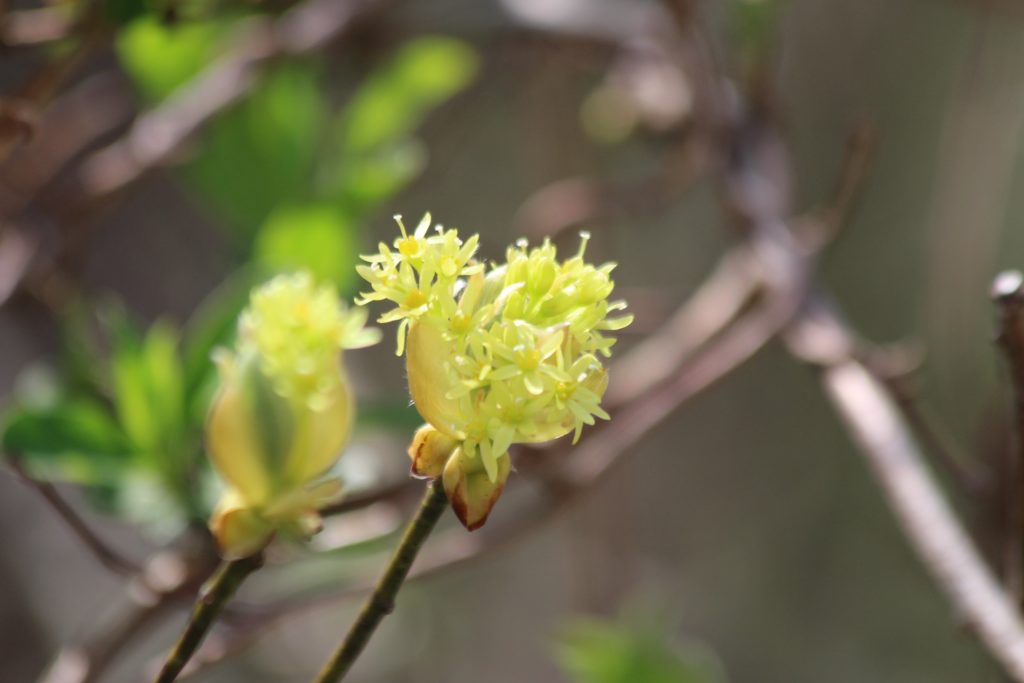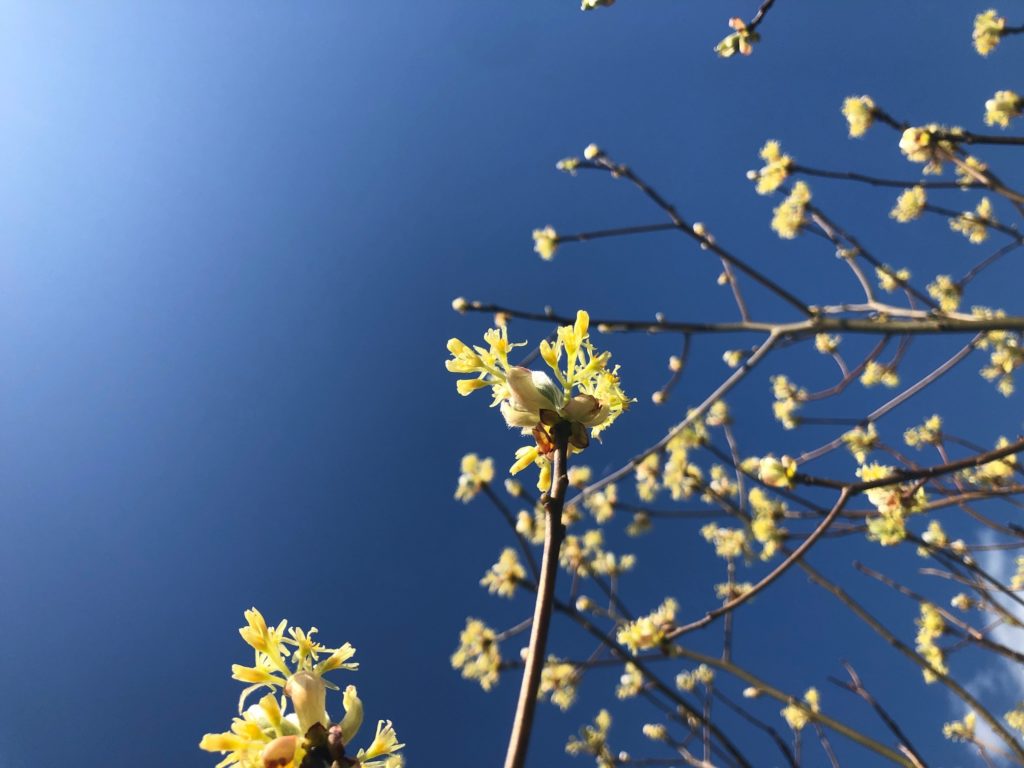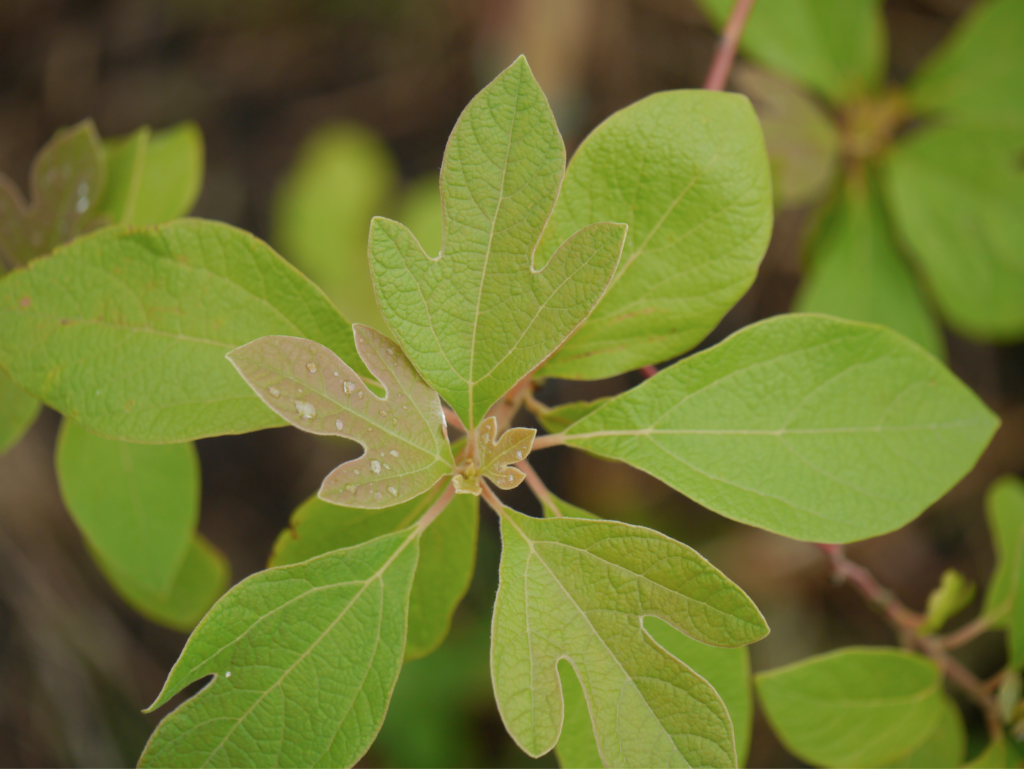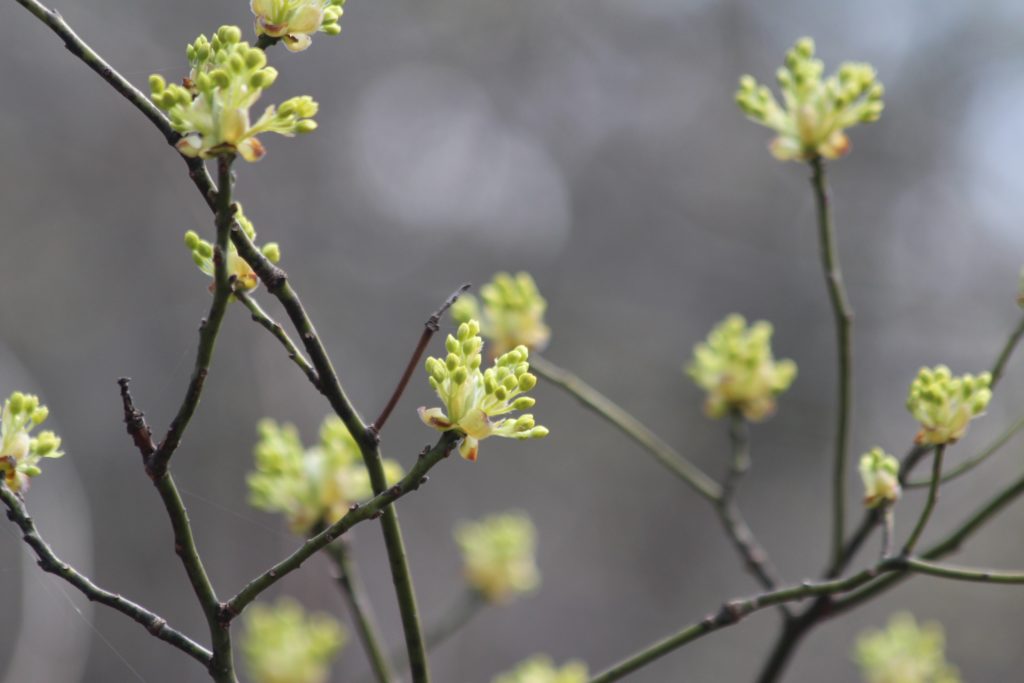
What’s in Bloom | Sassafras
April 12, 2021
- Sassafras (Sassafras albidum) is a deciduous tree between 35-60 feet tall, with yellow-green flower balls during spring.
- Many uses for bark and roots including flavoring, medicine, scents, and dyes; Safrole found in oils is mildly carcinogenic, thus commercial use has been largely banned.
- Suitable for planting in disturbed, infertile soils.
- Attracts fruit-eating birds and hosts various pollinator species.

Sassafras (Sassafras albidum) is a perennial1 deciduous tree typically between 35-60 feet tall, with ridged, mahogany-brown bark and aromatic mitten-shaped or three-pronged leaves. An imperfect plant2 the female trees are often covered with yellow-green flower balls from March to May, while males create fewer flowers. Females produce dark-blue drupe3 fruits in late summer, and red fall foliage contributes to the beautiful colors of autumn so central to our Virginia landscapes.
Sassafras prefers rich, moist, acidic sandy-loam soils and is tolerant of various levels of sun. Propagation is possible through seeds collected from fully-formed fruits, and from cuttings of root-suckers.
Culturally, sassafras has played an important role, with oils from roots and bark used in the iconic flavor of root beer, in scented soaps and teas, and as medicine. Spicy jelly can be made from the tea, and the bark is also used to produce an orange dye. However, it has been found that the plant’s oils contain Safrole, which has mild carcinogenic properties. Therefore, many former uses of the oils have been banned by the FDA. Consumption of Sassafras or Safrole oil can cause a number of unpleasant and dangerous effects, including liver toxicity.

Benefits to Biodiversity | Sassafras is a suitable tree to reforest disturbed, infertile soils, as it is tolerant of varied conditions. It is often found in wood-margins, fence rows, fields, thickets, and roadsides. It is an attractant for fruit-eating birds, and is host to species including swallow-tail butterflies.
- Perennial: returning year after year once established.
- Imperfect plant: reproductive structure that is either functionally male (pollinator), or functionally female (pollinated).
- Drupe: fruit with skin, fleshy mesocarp and hardened endocarp with seed inside.
